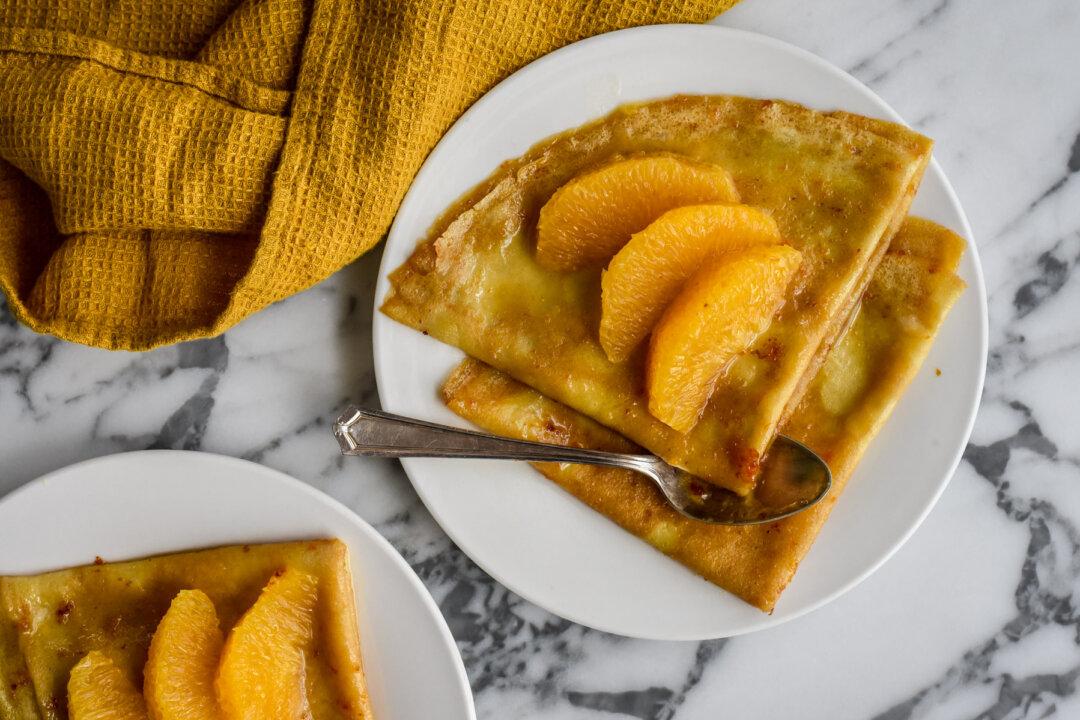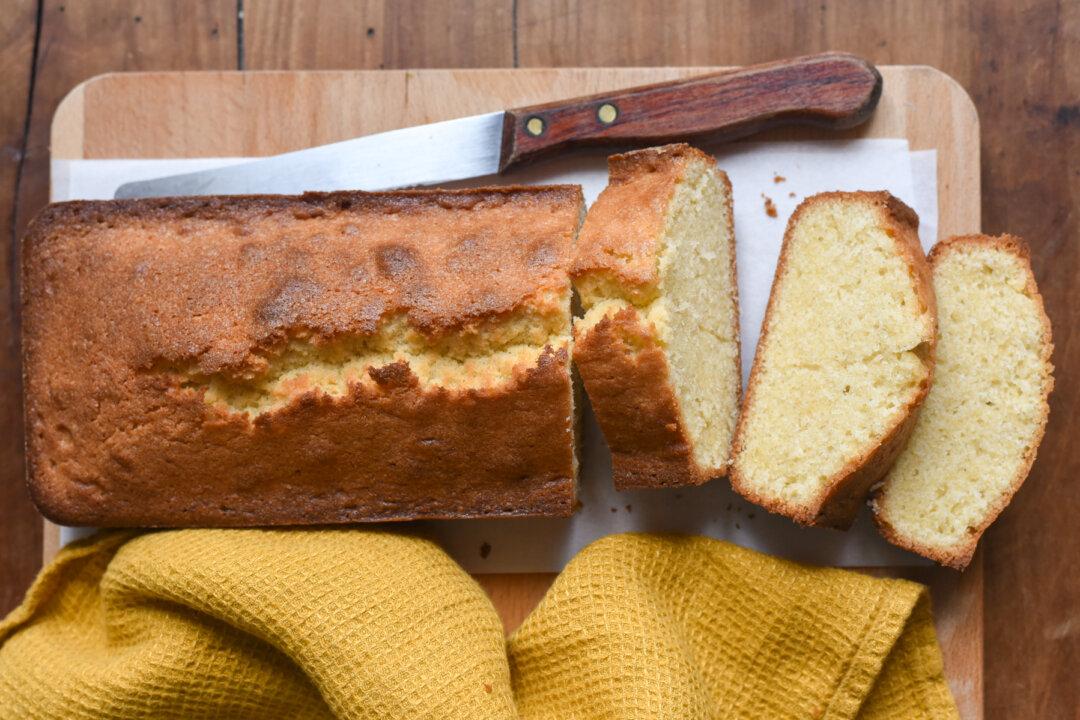Crêpes Suzette, classically thin French crêpes drenched in an orange-butter sauce and flambéed tableside, is one of the most memorable French desserts.
The recipe can vary from one cook to another, but in essence consists of delicate crêpes in a beurre Suzette, a sauce of sugar, butter, and orange juice and zest. For the finishing touch, the sauce is flambéed with Grand Marnier, or sometimes triple sec or orange Curaçao liqueur, into a thick, caramelized syrup.





